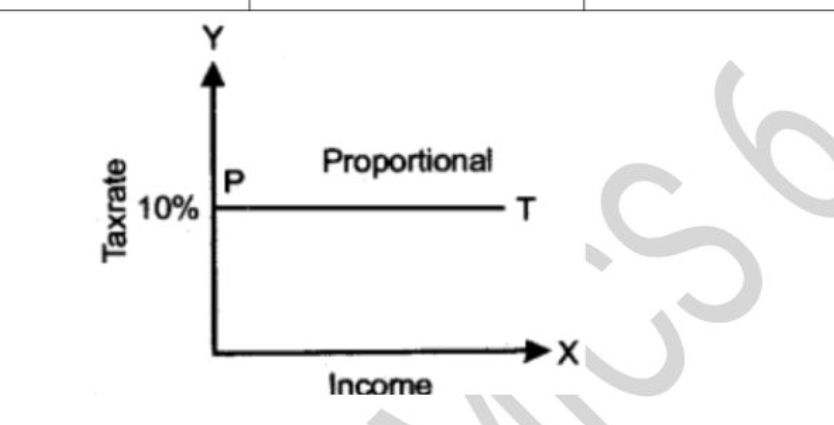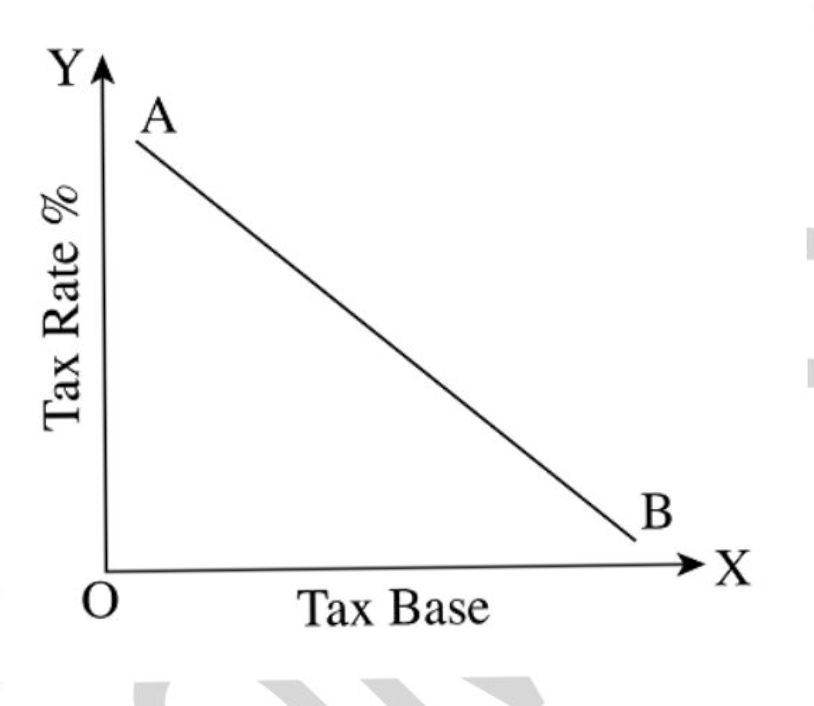Introduction:
Taxes are levied by the government on the basis of three major classes of tax rates. The classification of tax are progressive, proportional and regressive. In order to understand them it is essential to know how these three types of tax rates differ from each other on the basis of tax base. the base in the item to be taxed.
Example: it is the income being taxed in the care of income tax. it is the value of property in case of property tax and it is the value of goods sold in the case of sales tax.
Classification of tax:
- Proportional
- Progressive
- Regressive
Proportional tax: A proportional tax is one whose percentage rate remains the same as the tax base increases as a result the amount of tax paid is proportional to the tax base. If the tax rate is constant at 30% every year person shall have to pay income tax at this rate as his/her income increases.
Table 1 explain this in the case of an income tax that table shows that a person with a income of rupees 30,000 as the tax @ 30% the person with double the income of Rupees 2 lakhs pays double the amount of tax that is rs 60000. Thus as the income increases the amount of tax also increases in tge same proportion and so on. The tax rate being 30%. The tax takes away the same percentage of income from low as well as high income persons.
Figure illustrate the proportional taxation person with rupees 1 lakh income are charged the same tax rate of 30% as person with 2 lakhs and 3 lakhs and so on the resultant tax curve T is horizontal.
Table 1
| Tax base | Tax rate % | Amount of tax in RS |
| 1,00,000 | 30 | 3K |
| 2,00,000 | 30 | 60,K |
| 3,00,000 | 30 | 90,K |
| 4,00,000 | 30 | 1,20,K |
| 5,00,000 | 30 | 1,50,K |

Progressive tax: A progressive tax is one whose percentage rate increases as the tax base increases. In other words the income of a person increase the tax rate also increases gradually and vice versa. A progressive tax is graduated so that a person with the higher income pays a greater percentage in tax than a person with the lower income.
Table 2 explain the progressive income tax system to simplify our explanation we have taken equal increment of income of the tax base and also equal increases in tax rate . The table show that as the tax base (slab of income) increases the tax rate also increases by an equal percentage. The first cane slab of rupees 0 to 1 lakh is totally exempted from tax now with every increasing income by rupees 1,00,000 the tax rate increases by 5% beginning with a minimum tax rate of 10%. the tax takes a larger percentage of income from people in higher income slabs than those in lower income slab. a person in rupees 1 lakh to 2 lakh income slab pays rupees 10,000 as tax and a person in rupees 2 lakh to 3 lakhs slabs pays rupees 25000 as tax and so on.
Table 2 is illustrated in figure 2 which shows that the tax line T rises tax upward from left to right as the rate increases with the rise in income.
| Tax base | Tax rate % | Amount of tax RS |
| 100000 | Exemption | |
| 100001-200000 | 10 | 10,000 |
| 200001-300000 | 15 | 10K + 15K |
| 300001-400000 | 20 | 25K + 20K |
| 400001-500000 | 25 | 45K +25K |

Regressive tax: a regressive tax is one whose percentage rate decreases as r=the tax base increases. in other words, as the income of a person increases , the rate of tax decreases. A high income person pays less tax than a low income person in proportion to this income. Thus regressive taxation is just the opposite of progressive taxation.
Table 3 explains a regressive income tax table shows that as the income increases from rupees 1 lakh to rupees 6 lakh. The tax rate decreases from 60% to 10. Consequently a person with an income of rupees 1 lakh pays rupees 60000 as tax, as income doubles from rupees 1 lakh to 20 lakh. He pays 1 lakh as tax which is less than proportionate to the increase in income and so on.
This is illustrated in figure 3 when the income is 1 lakh the tax rate is 60%as at point A. as income increases to rupees lakhs, the tax rate declines to 50% and so on. Thus the tax curve T of a regressive tax slopes downwards from left to right.
They are like proportional taxes for instance a 10% sales tax is uniform for all consumers whether their income is high or low but low income consumer spend a larger proportion of their income. On the commodity than the high income consumers.
| Tax base | Tax rate % | Amount of tax |
| 100000 | 60 | 60K |
| 200000 | 50 | 100K |
| 300000 | 40 | 120K |
| 400000 | 30 | 120K |
| 500000 | 20 | 100K |
| 600000 | 10 | 60K |

also read: explain the effects of tax on production and distribution.